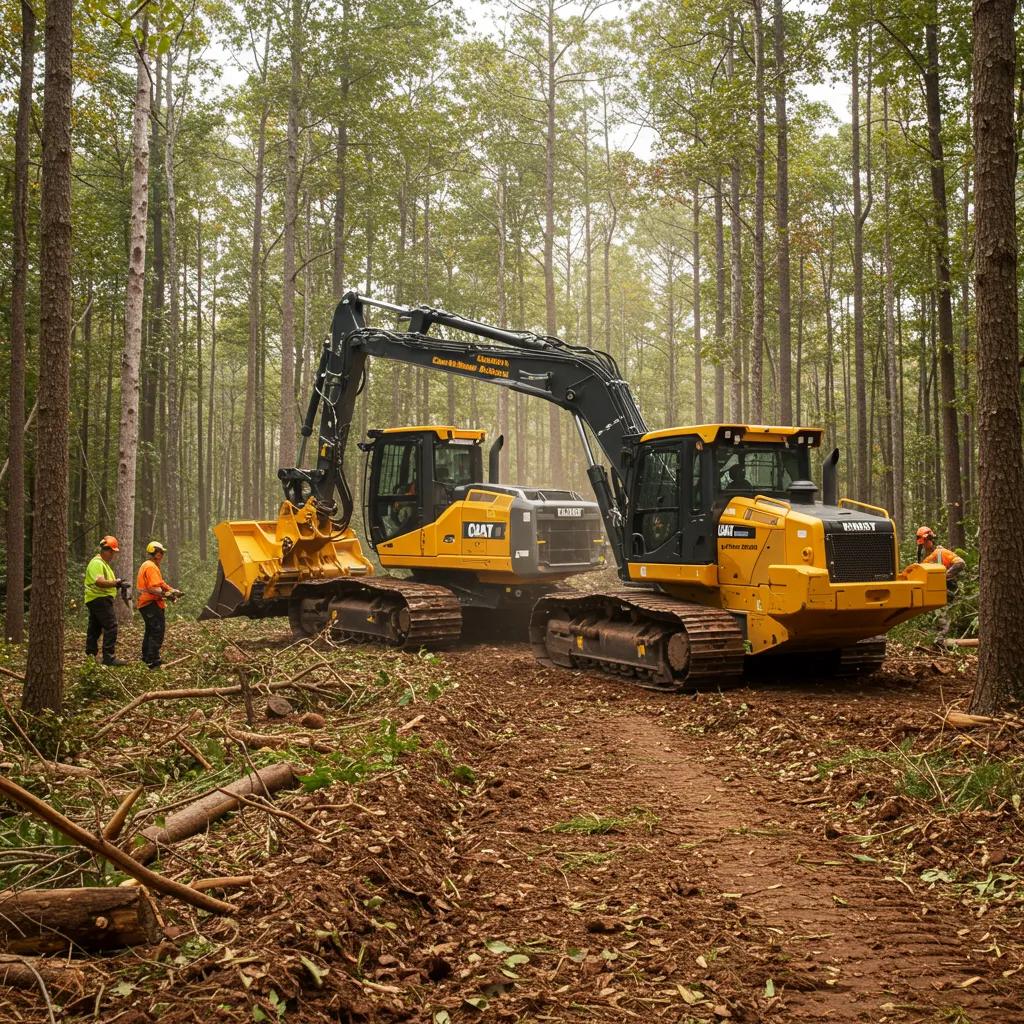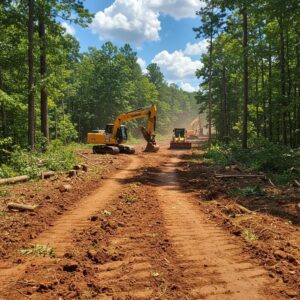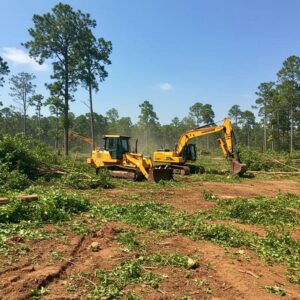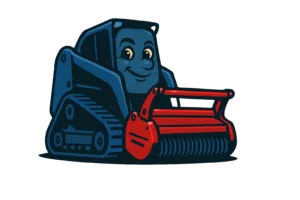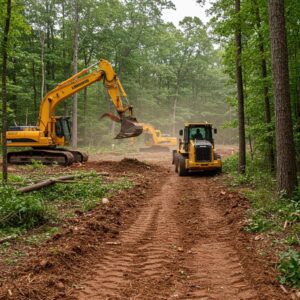Unlock Your Land Clearing Business's Full Earning Potential: Strategies for Maximum Profit and Growth
Land clearing companies often grapple with unpredictable revenue cycles, making consistent scaling and profitability a challenge. This guide reveals how to pinpoint your business’s revenue potential and build a repeatable growth strategy. You’ll discover 2025 revenue benchmarks and profit margin expectations, explore key income sources (including forestry mulching), understand market shifts influencing demand through 2034, and implement practical marketing, sales, and reinvestment tactics to turn leads into lucrative projects. We’ll define what “potential revenue” means for owner-operators and multi-crew operations, break down the drivers of margins and revenue (service mix, equipment leverage, and lead quality), and outline concrete steps to stabilize your income. Inside, you’ll find comparative tables for revenue by business size, a breakdown of revenue streams by percentage, and an ROI formula with practical examples for financial planning. Sections also cover seasonality, channel-specific marketing recommendations for land clearing leads, and a scalable roadmap to move beyond inconsistent cycles toward $1M+ in growth through predictable lead generation and operational expansion.
What's the Average Revenue and Profit Margin for Land Clearing Businesses in 2025?
Establishing average revenue and profit margin benchmarks provides owners with realistic targets and clarifies why service mix and operational scale significantly impact outcomes. In 2025, owner-operators typically see lower annual revenue with tighter margins due to limited labor and equipment utilization. Conversely, small and large fleets leverage their capacity for higher top-line figures and improved margin performance. Understanding these benchmarks empowers owners to set pricing, allocate capital, and establish hiring thresholds that boost profit margins through higher average job values and better equipment utilization. The following H3 sections detail typical revenue ranges, margin variations by service, and the primary factors influencing revenue and margins for land clearing businesses.
What Are the Typical Revenue Ranges for Land Clearing Companies?
Revenue ranges vary significantly based on scale: owner-operators, small fleets, and large fleets exhibit distinct revenue bands driven by crew count and equipment capabilities. Owner-operators often operate within a conservative revenue band, with modest annual sales due to limited simultaneous job capacity. Small fleets, managing one to three crews, can tackle multiple mid-size projects and approach higher mid-six-figure revenues. Multi-crew or large fleets that secure commercial and forestry mulching contracts can surpass seven figures by landing larger, recurring projects and optimizing equipment utilization. These distinctions highlight how scaling crews, bidding on larger contracts, and diversifying services directly contribute to increased monthly and annual revenue potential.
| Business Type | Typical Annual Revenue Range | Key Capacity Driver |
|---|---|---|
| Owner-operator | $75,000 – $300,000 | Single crew utilization and local projects |
| Small fleet (1–3 crews) | $300,000 – $900,000 | Multiple simultaneous projects and regional reach |
| Large fleet (multi-crew) | $900,000 – $3,000,000+ | Commercial contracts, repeat clients, high utilization |
This comparison illustrates how capacity and service mix scale revenue potential, pinpointing where owners should strategically invest to advance between these revenue bands.
How Do Profit Margins Vary Across Different Land Clearing Services?
Profit margins differ considerably by service type due to variations in equipment intensity, subcontracting needs, and labor requirements. These differences are critical for guiding growth strategies. Basic clearing services typically yield moderate margins after accounting for fuel and crew expenses. Forestry mulching, however, generally offers higher margins, driven by lower disposal costs and premium pricing for its environmentally friendly approach. Grading and excavation can present variable margins due to equipment wear and compliance costs. Stump removal and specialized restoration work often command premium pricing, enhancing per-job profitability. By focusing on high-margin services like forestry mulching and targeted commercial projects, businesses can elevate their blended profit margins and achieve greater cash flow stability.
| Service Type | Estimated Net Margin Range | Margin Driver |
|---|---|---|
| Basic clearing | 10% – 20% | Fuel, labor, disposal costs |
| Forestry mulching | 20% – 35% | Lower disposal, premium pricing |
| Grading/excavation | 8% – 20% | Equipment depreciation, regulation |
| Stump removal/restoration | 15% – 30% | Specialized labor and pricing |
This table highlights areas for prioritizing service development to boost overall profit margins and identifies the operational levers that drive margin improvement.
Which Factors Influence Land Clearing Business Revenue?
A distinct set of internal and external drivers explains revenue fluctuations and offers actionable levers for owners to adjust for better results. Internal factors include equipment capacity, crew efficiency, pricing strategies, and service mix; investing in appropriate attachments and training enhances utilization and average job value. External factors encompass regional construction activity, seasonality, competitive landscapes, and market trends for land clearing attachments; aligning sales efforts with construction pipelines and urban development expands bid opportunities. Optimizing these factors—particularly by enhancing lead quality and conversion rates—translates directly into higher and more predictable monthly revenue.
- Key internal drivers: equipment, crew efficiency, pricing.
- Key external drivers: construction pipeline, seasonality, regional demand.
- Actionable levers: bid targeting, pricing adjustments, service diversification.
Implementing these levers sequentially—improving lead generation, converting with a refined sales process, and reinvesting profits into capacity—creates compounding revenue growth and mitigates the feast-or-famine cycle.
What Are the Key Revenue Streams in Land Clearing Businesses?
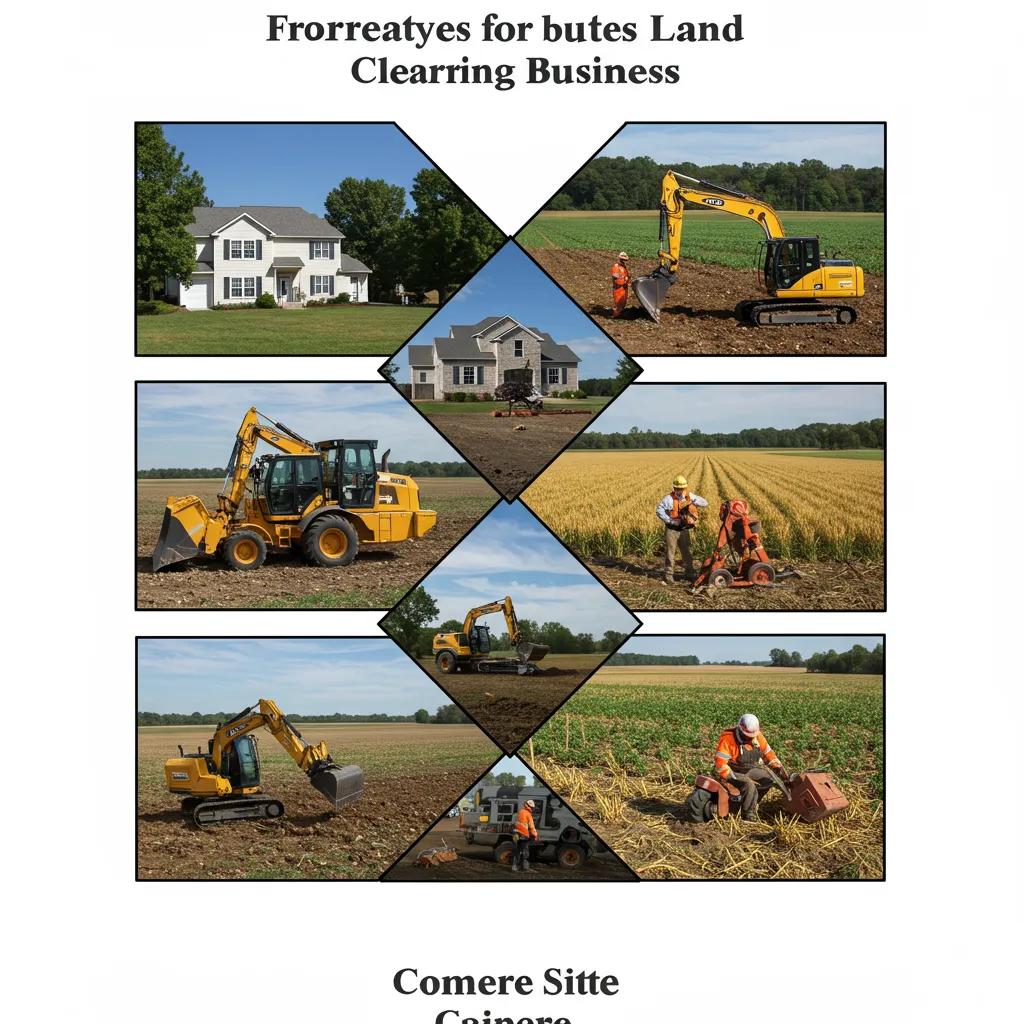
The primary revenue streams for land clearing encompass residential, commercial, agricultural, and forestry mulching services, each presenting unique average job values and marketing requirements. Clearly defining each stream, its typical job size, and frequency helps owners strategically allocate marketing budgets and operational capacity. The revenue mix significantly impacts cash flow stability: residential work often provides frequent, smaller jobs for steady income; commercial work delivers larger, less frequent projects; agricultural clients offer seasonal bulk work; and forestry mulching presents high-margin, scalable opportunities. The following subsections quantify revenue shares, explain forestry mulching’s role in growth, and demonstrate how service diversification enhances profitability.
How Much Revenue Comes from Residential, Commercial, and Agricultural Clients?
Revenue shares are influenced by region and marketing focus, with each client type offering distinct job values and frequencies that necessitate tailored sales approaches. Residential clients typically generate high-frequency, lower-value jobs, ideal for maintaining consistent cash flow. Commercial clients, on the other hand, provide larger contracts that can rapidly boost annual revenue when secured. Agricultural work tends to be seasonal but can yield substantial block revenue when farms or land managers contract for bulk clearing. Targeted marketing—such as local SEO for residential work, cultivating relationships for commercial bids, and outreach to agricultural networks—aligns lead generation strategies with client value.
| Client Type | Typical Job Value | Typical Revenue Share (estimate) |
|---|---|---|
| Residential | $1,000 – $10,000 | 20% – 40% |
| Commercial | $10,000 – $200,000+ | 20% – 50% |
| Agricultural | $5,000 – $100,000 | 10% – 30% |
Understanding the relative value and frequency of each client type enables owners to prioritize marketing channels and ensure operational readiness for the types of jobs they aim to scale.
What Is the Role of Forestry Mulching in Revenue Growth?
Forestry mulching often serves as a high-margin, scalable service that differentiates companies and supports premium pricing, making it a strategic revenue driver. Mulching significantly reduces disposal costs and appeals to landowners seeking environmentally conscious clearing methods, allowing contractors to command higher per-acre rates. When marketed effectively, forestry mulching can be upsold alongside clearing, grading, or restoration services, thereby increasing average job value and customer lifetime value. Investing in appropriate mulcher attachments and operator training creates a competitive edge that boosts margins and encourages repeat business, particularly in areas where landowners prioritize minimal soil disturbance.
- Forestry mulching advantages: higher margins, lower disposal costs, premium demand.
- Operational requirements: mulcher attachments, trained operators, targeted marketing.
- Upsell opportunities: integrate mulching with grading, restoration, or erosion control services.
By emphasizing mulching in proposals and marketing efforts, businesses can enhance their blended margins and attract clients willing to pay for environmental benefits.
How Can Diversifying Services Increase Overall Profitability?
Expanding into grading, excavation, restoration, and seasonal services helps to smooth out revenue streams and increase average job value by offering bundled solutions to clients. Each additional service captures a larger portion of the project lifecycle, reduces the need for subcontracting, and boosts per-customer revenue through cross-selling. Diversification requires investment in equipment or strategic partnerships and targeted marketing to educate clients on the benefits of bundled services. However, the incremental margin on bundled jobs often justifies modest capital expenditures. Prioritizing diversification opportunities with favorable payback periods—such as adding a grading attachment or offering post-clearing restoration services—enhances profitability while making scheduling more predictable.
- Bundled services: Elevate average job value by offering clearing, grading, and restoration packages.
- Equipment partnerships: Minimize capital expenditure by renting or sharing attachments to test new services.
- Seasonal offerings: Introduce maintenance contracts or erosion control services during slower months.
A disciplined diversification roadmap should link expected payback periods to each new service and prioritize options that first increase utilization and margins.
What Market Trends Are Driving Land Clearing Business Growth from 2024 to 2034?
Macro trends, including the compound annual growth rate (CAGR) of the land clearing attachment market, construction activity, and urban development, are reshaping demand and equipment economics through 2034. Growth in the attachment market influences the availability of specialized tools and impacts pricing and replacement cycles, while expansions in the construction pipeline create immediate demand for clearing services. Owners who align their investments with these trends can capture market share by selectively investing in attachments and capacity when demand signals are strong. The subsequent H3 subsections connect construction growth and attachment market forecasts to operational decisions and propose targeting strategies for urban and agricultural demand.
How Does Construction Industry Growth Affect Land Clearing Demand?
Construction growth directly fuels demand for land clearing, as new development projects necessitate site preparation. The timing of these projects dictates the pipeline opportunities for contractors. When construction activity accelerates, demand for clearing services rises across residential subdivisions, commercial developments, and infrastructure projects, leading to higher-value bids and repeat business. Contractors who cultivate relationships with builders and civil contractors, register as preferred vendors, and time their outreach to pre-construction phases can secure more predictable work. Positioning services to align with project timelines and the procurement habits of builders transforms industry growth into a steady stream of leads.
- Link to construction cycles: Proactive pre-construction outreach secures early bids.
- Tactics: Network with developers, bid on subcontract packages, and offer comprehensive site-preparation solutions.
- Outcome: Access to larger, predictable projects and enhanced average job values.
Integrating these tactics with a focused sales process allows businesses to capture megaproject opportunities driven by construction expansion.
What Is the Forecast for the Land Clearing Attachment Market?
The multi-year growth forecast for the land clearing attachment market influences equipment costs, availability, and technology adoption decisions that impact service capabilities and pricing. A projected mid-single-digit CAGR in the attachments market indicates steady innovation and gradually decreasing barriers to entry for advanced tools, enabling more contractors to offer specialized clearing and mulching services. For owners, this forecast suggests planning equipment purchases with a focus on utilization and competitive differentiation, rather than reacting to short-term price fluctuations. Timing investments during periods of rising demand and favorable financing can accelerate capability upgrades without negatively impacting cash flow.
| Market Aspect | Forecast/Metric | Operational Implication |
|---|---|---|
| Attachment market growth | Mid-single-digit CAGR | Plan phased equipment upgrades |
| Equipment availability | Increasing | More options for service differentiation |
| Pricing pressure | Moderate | Evaluate rental vs. purchase economies |
This forecast encourages strategic timing of equipment investments to align with demand cycles and maintain healthy profit margins.
How Do Urban Development and Agricultural Needs Influence Revenue?
Regional dynamics, such as urban sprawl, infrastructure projects, and agricultural land consolidation, significantly shift demand patterns and determine which service mix will be most profitable in a given area. Urban development increases demand for residential and commercial clearing near expanding cities, while agricultural consolidation creates larger block-clearing opportunities in rural regions. Contractors should analyze regional development pipelines and zoning changes to identify emerging niches and adapt their marketing targets accordingly. Strategic geographic positioning and service bundles tailored to local needs allow businesses to capture the most lucrative opportunities as regional demand evolves.
- Urban areas: prioritize residential and commercial contracts, navigate permitting processes.
- Rural/agricultural areas: focus on bulk contracts, harvesting, and field preparation.
- Strategy: align service mix with regional trends to maximize revenue capture.
Mapping local development pipelines to service capabilities ensures that capacity investments are aligned with where the most profitable work will be.
How Can Land Clearing Businesses Increase Revenue Through Strategic Marketing and Lead Generation?

Targeted marketing and high-intent lead generation, combined with rigorous sales processes and channel-specific budgets, transform prospect flow into large, profitable jobs. Effective channels for land clearing leads include SEO for organic visibility, Google Ads for high-intent searchers, and social advertising for brand awareness and local targeting. A disciplined approach—prioritizing channel mix, tracking leads meticulously, and aligning budgets with expected lead quality—drives predictable revenue increases. The following H3 subsections detail the Rise Online Advertising Land Clearing Growth System, rank channels by ROI, and explain sales process optimizations to convert more leads into high-value jobs.
What Is the Rise Online Advertising Land Clearing Growth System?
The Rise Online Advertising Land Clearing Growth System is a comprehensive digital marketing and lead generation framework designed to deliver consistent, exclusive opportunities for land clearing businesses by integrating targeted channels, automation, and sales conversion tactics. The system combines SEO, Google Ads, and conversion-focused website and CRM strategies to generate high-quality leads while reducing reliance on word-of-mouth referrals. A concise client case study demonstrates significant impact: a client utilizing this system transitioned from lower revenue to substantially higher revenue within months by improving lead volume and conversion efficiency, showcasing how predictable lead flow stabilizes cash flow. For land clearing owners seeking structured growth, the Growth System pairs channel-level tactics with sales automation to enable reliable scaling.
- Core components: SEO, Google Ads, optimized websites, CRM automation, and follow-up sequences.
- Expected outcomes: a steady stream of exclusive, high-intent opportunities and improved close rates.
- Evidence: client results and training resources illustrate operational implementation and outcomes.
This system demonstrates that niche-focused marketing and diligent follow-through convert marketing expenditures into measurable revenue uplift.
Which Digital Marketing Channels Deliver the Highest ROI for Land Clearing Companies?
Channel ROI is determined by lead intent and cost: search-based channels generally offer higher intent and conversion rates, while social platforms excel at scaling awareness and generating lower-cost leads. Google Ads typically provides the highest immediate ROI for high-intent prospects actively searching for land clearing services, although the cost-per-lead can be higher than social media. SEO builds lasting organic visibility and reduces long-term customer acquisition costs by capturing intent-based traffic over time. Facebook Ads and TikTok Ads offer efficient awareness and lead generation, particularly for residential segments and visual before/after promotions, but expect lower conversion rates without robust follow-up processes. Allocate budgets with a priority for search channels, a tested social media budget for awareness, and continuous performance measurement to optimize spend based on lead quality.
- Google Ads: Captures high-intent leads, offers immediate scalability, with a higher cost-per-lead.
- SEO: Provides lower long-term customer acquisition costs, requires time to achieve rankings, and yields high lifetime value.
- Facebook Ads / TikTok Ads: Effective for residential awareness and visual storytelling; support the top and middle stages of the sales funnel.
Balancing these channels ensures short-term bookings through paid search and long-term pipeline development via organic and social strategies.
How Can Sales Process Optimization Convert More Leads into High-Value Jobs?
Optimizing the sales process converts a larger percentage of inbound leads into significant contracts by reducing friction and enhancing proposal and follow-up quality. Implement a CRM system to track lead source, job specifics, and follow-up cadence, and utilize automation to ensure timely contact and consistent quoting. Provide simple call scripts designed to uncover project scope and budget, price based on value rather than hourly labor, and offer tiered proposals to upsell services like mulching, grading, or restoration. Training crews to produce quick, professional estimates and employing digital proposals with clear scope and visuals can significantly increase close rates and average job value.
- CRM best practices: track lead sources, assign follow-up tasks, and log conversion metrics.
- Sales tactics: utilize scripted discovery calls, tiered pricing structures, and visually appealing proposals.
- Automation: implement email/SMS reminders and scheduled follow-ups to minimize lead leakage.
A more efficient sales funnel boosts conversion rates, increases average job size, and improves marketing ROI as a greater number of leads are converted into profitable projects.
How Do You Calculate and Maximize Marketing ROI for Land Clearing Businesses?
Measuring marketing ROI involves attributing revenue to specific channels, tracking lead-to-job conversion rates, and calculating unit economics to guide reinvestment decisions. Employ consistent tracking methods—such as UTM parameters, CRM lead-source fields, and job-value attribution—to compute customer acquisition cost (CAC) and lifetime value (LTV). Example calculations demonstrate how ad spend, lead volume, conversion rates, and average job value interact to produce ROI and inform budget allocation. The H3 subsections below provide a step-by-step measurement checklist and recommendations for reinvesting profits into marketing, equipment, and hiring to scale operations effectively.
What Are the Steps to Measure Marketing Impact on Revenue?
Measuring marketing impact begins with setting up tracking mechanisms and concludes with periodic financial reviews that guide spend allocation; consistent configuration is essential for accurate ROI calculations. Start by tagging campaigns with UTM parameters, capturing source and campaign details in the CRM, and assigning closed jobs back to their original lead sources to calculate conversion rates and CAC. Record the average job value and track conversion paths to compute LTV and compare it against CAC for profitability assessment. Tools include basic CRM configuration, spreadsheet models, and periodic audits to validate attribution and refine channel budgets, collectively enabling data-driven marketing investment decisions.
- Track: Implement UTM parameters and CRM source fields for all campaigns.
- Attribute: Assign closed revenue to the initial lead source and calculate CAC.
- Analyze: Determine conversion rates, average job value, and ROI for each channel.
| Metric | Description | Example Value / Formula |
|---|---|---|
| CAC (Customer Acquisition Cost) | Average cost to acquire a new customer | Total ad spend ÷ number of new customers |
| Conversion Rate | Percentage of leads that become paying jobs | Number of jobs ÷ number of leads |
| Marketing ROI | Return on marketing investment | (Revenue from campaign – Spend) ÷ Spend |
Applying these formulas with actual campaign data clarifies which channels yield profitable customers and which require optimization.
How Should Profits Be Reinvested to Scale Land Clearing Operations?
Reinvestment choices—covering marketing, equipment, and hiring—should be prioritized based on payback period and strategic impact, with a focus on actions that enhance utilization and revenue per job. Reinvesting in marketing amplifies lead flow and should be scaled when CAC is less than LTV. Targeted equipment purchases that enable higher-value services (such as forestry mulcher attachments) increase average job value and profit margins. Hiring should align with predictable lead flow: add sales capacity and operators only when conversion rates and backlog justify the additional headcount. A disciplined reinvestment plan should link expected payback timelines to each spending category and maintain a balance between growth and cash reserves.
- Priority 1: Marketing channels demonstrating positive ROI and scalable capacity.
- Priority 2: Equipment that facilitates high-margin services and improves utilization.
- Priority 3: Hiring sales and operations staff to support increased volume.
By tying reinvestment decisions to measured ROI and utilization targets, owners can scale predictably and avoid misallocating capital.
What Seasonal Revenue Opportunities Exist for Land Clearing Contractors?
Seasonality influences job types, pricing power, and capacity planning. Successful contractors employ proactive strategies to maximize peak-season revenue and cultivate off-season demand. High-demand months allow for surge pricing, subcontracting to meet volume needs, and focused marketing to capture urgent projects, while slower months are ideal for maintenance contracts, strategic planning, and training. Understanding the seasonal calendar and aligning crew schedules, equipment maintenance, and promotional campaigns leads to smoother cash flow and higher annual revenue. The following H3 subsections outline seasonal patterns and practical strategies for maximizing revenue during peak periods.
How Does Seasonality Affect Land Clearing Job Availability and Pricing?
Seasonal cycles dictate the types of available work and influence pricing power, with peak construction and dry seasons often commanding higher rates and a greater volume of projects. During high-demand periods, contractors can increase their prices, prioritize the most profitable jobs, and schedule preventive maintenance to minimize downtime. Off-seasons necessitate creative offerings—such as erosion control, targeted maintenance contracts, or equipment rental services—to sustain revenue. Planning a seasonal calendar that synchronizes marketing pushes with seasonal demand ensures efficient capacity utilization and pricing strategies that maximize profit margins.
- Peak season: increase prices, prioritize high-margin jobs, and maintain equipment diligently.
- Off-season: offer maintenance contracts, training programs, and equipment rental services.
- Planning tip: Align marketing campaigns with lead generation windows six to twelve weeks before peak season begins.
A proactive seasonal plan reduces idle time and transforms typical slow months into valuable revenue-generating opportunities.
What Strategies Can Maximize Revenue During High-Demand Seasons?
To maximize revenue during peak periods, combine operational readiness with targeted marketing and tactical pricing to capture urgent, high-value jobs without compromising profit margins. Execute staffing plans that include temporary hires or vetted subcontractors to manage demand spikes and prevent turning away profitable work. Implement surge pricing or premium scheduling for urgent projects, maintain rapid-response lead follow-up, and prioritize high-margin proposals. Advance booking promotions, priority scheduling for loyal clients, and streamlined on-site quoting processes can significantly increase conversion rates during the busiest months.
- Staffing: Pre-negotiate agreements with subcontractors and cross-train crews to flexibly manage capacity.
- Pricing: Utilize surge pricing and tiered options to maximize revenue per available slot.
- Marketing: Launch targeted campaigns focused on customers ready to commence projects within 30–90 days.
These combined tactics enable businesses to capture more high-value jobs and improve overall annual revenue without incurring excessive capital strain.
How Can Land Clearing Business Owners Overcome Revenue Inconsistency and Scale to $1M+?
Overcoming revenue inconsistency requires a structured pipeline of leads, disciplined sales processes, and phased operational scaling that effectively converts demand into sustainable revenue growth. Common revenue challenges include unpredictable lead flow, intense price competition, and equipment downtime; addressing these through predictable lead generation, enhanced sales conversion, and strategic reinvestment in capacity lays the groundwork for scaling to $1M+.
What Are Common Revenue Challenges in Land Clearing Businesses?
Common challenges include unpredictable lead flow, underpriced bids, equipment failures, and a lack of repeat business, all of which diminish revenue predictability and margin stability. Unpredictable leads necessitate reactive pricing and rushed scheduling; underpricing erodes profit margins; equipment downtime reduces operational utilization; and missed follow-ups allow potential leads to go cold. Solutions involve implementing a CRM and a consistent follow-up cadence, shifting to value-based pricing strategies, scheduling preventive maintenance, and offering bundled services to encourage repeat business. Addressing these issues sequentially—stabilizing lead flow, improving conversion rates, and then investing in capacity—builds a durable path toward higher revenue.
- Lead unpredictability → implement CRM and a robust acquisition plan.
- Pricing pressure → adopt value-based and tiered pricing models.
- Equipment downtime → schedule preventive maintenance and secure backup options.
Systematically resolving these issues enhances predictability and creates the necessary conditions for reliable, scalable revenue generation.
How Does Consistent Lead Generation Support Sustainable Growth?
Predictable lead generation provides the essential foundation for hiring staff, investing in equipment, and negotiating larger contracts, as it significantly reduces risk and demonstrates sustained market demand. With a steady inflow of leads, owners can confidently justify hiring sales personnel, financing equipment purchases, and committing to larger commercial bids without jeopardizing cash flow. Key metrics to track include lead volume, conversion rate, average job value, and customer acquisition cost; monitoring these KPIs allows for incremental scaling with controlled risk. Linking consistent lead generation to specific investments—such as acquiring a new mulcher attachment or adding an extra crew—ensures that each reinvestment has a clear and measurable path to return.
- Key metrics: leads per month, conversion rate, average job value, CAC.
- Growth mechanic: predictability enables strategic hiring and equipment investment timing.
- Example approach: increase lead flow by X% to justify adding one crew and a mulcher.
Consistent lead generation removes the constraint of the “feast-or-famine” cycle and enables evidence-based strategic scaling decisions.
What Case Studies Demonstrate Revenue Growth from $400K to $1.5M in 12 Months?
Concise case study summaries illustrate how targeted marketing, sales process enhancements, and operational reinvestment combine to achieve rapid revenue scaling, effectively demonstrating the mechanisms behind significant growth leaps. One summarized client example involved a strategic focus on high-intent Google Ads campaigns, conversion-optimized website updates, and disciplined CRM follow-up, which collectively boosted lead volume and close rates. The business then reinvested incremental profits into a mulcher attachment and an additional crew, thereby increasing capacity. Another case study integrated local SEO, targeted commercial outreach, and tiered pricing strategies that successfully captured larger contracts; operational adjustments reduced job cycle times and improved equipment utilization. These case summaries highlight that channel-level marketing effectiveness, improved conversion rates, and timely reinvestment are the three pivotal levers driving dramatic revenue increases.
- Primary interventions: targeted Google Ads, SEO, conversion-focused website design, CRM automation.
- Operational levers: addition of a crew, acquisition of a mulcher attachment, and process standardization.
- Outcome pattern: increased lead volume + higher conversion rates = capacity-funded growth.
For owners ready to replicate these results, structured training resources, client success stories, and consultative planning sessions are available to adapt the approach to specific markets and capacity constraints. Rise Online Advertising LLC’s Land Clearing Growth System, along with its complimentary training resources and options for booking a call or downloading a growth guide, provides frameworks and templates that assist owners in running ROI projections and implementing the same measurement frameworks utilized in these case studies.
Frequently Asked Questions
What are the best practices for marketing a land clearing business?
Effective marketing for a land clearing business requires a multi-channel strategy. Leverage SEO to boost organic visibility, utilize Google Ads to target high-intent customers, and employ social media for brand awareness. Tailor your marketing approaches to different client segments—residential, commercial, and agricultural. Regularly analyze the performance of each channel to optimize your budget allocation. Furthermore, consider creating valuable content that showcases your expertise, such as blog posts or videos on land clearing techniques, to attract potential clients and establish industry credibility.
How can land clearing businesses manage equipment maintenance effectively?
Efficient equipment maintenance is vital for minimizing downtime and maximizing productivity in land clearing operations. Implement a comprehensive preventive maintenance schedule that includes regular inspections, servicing, and timely repairs. Utilize a maintenance management system to track equipment usage and service history. Training operators on proper equipment handling can also reduce wear and tear. Additionally, maintain a backup equipment plan to ensure continuous operations in the event of unexpected breakdowns, thereby preserving operational efficiency and revenue flow.
What role does customer feedback play in improving land clearing services?
Customer feedback is invaluable for enhancing land clearing services, offering critical insights into client satisfaction, service quality, and areas needing improvement. Regularly solicit feedback through surveys or post-project follow-up calls. Analyze this feedback to identify trends and make informed adjustments to your service offerings. Positive testimonials can also be leveraged in marketing materials to build trust with prospective clients. By actively responding to customer input, businesses can foster loyalty, elevate service quality, and ultimately drive repeat business.
How can land clearing businesses prepare for economic downturns?
Preparing for economic downturns involves strategic planning and prudent financial management. Diversify your service offerings to appeal to a broader client base, including residential, commercial, and agricultural sectors. Build a substantial cash reserve to mitigate revenue fluctuations and consider flexible pricing strategies to remain competitive. Strengthening relationships with existing clients can lead to crucial repeat business during challenging economic periods. Furthermore, focus marketing efforts on highlighting the essential value and necessity of your services, ensuring your business remains top-of-mind for potential clients even in difficult times.
What are the benefits of networking within the land clearing industry?
Networking within the land clearing industry offers significant advantages, including access to new clients, potential partnerships, and valuable industry insights. Building relationships with fellow contractors, suppliers, and local businesses can generate referrals and collaborative opportunities. Attending industry conferences, trade shows, and local business events allows for connections with peers and keeps you informed about market trends. Networking also provides a platform for sharing best practices and learning from others’ experiences, ultimately enhancing your business strategies and operational efficiency.
How can technology improve operations in land clearing businesses?
Technology can substantially enhance operations in land clearing businesses by improving efficiency and accuracy. Implementing project management software can streamline scheduling, resource allocation, and team communication. GPS and mapping tools can optimize route planning for equipment and crews, reducing travel time and associated costs. Additionally, utilizing drones for site assessments provides valuable aerial perspectives, improving project planning and execution. Embracing technology not only boosts productivity but also positions your business as modern and competitive in the evolving land clearing market.
What are the key performance indicators (KPIs) for measuring success in land clearing businesses?
Key performance indicators (KPIs) for land clearing businesses include metrics such as lead conversion rate, average job value, customer acquisition cost (CAC), and revenue per crew. Monitoring these KPIs helps assess the effectiveness of marketing strategies and operational efficiency. Additionally, tracking equipment utilization rates and maintenance expenses can offer insights into operational performance. Regularly reviewing these metrics enables business owners to make data-driven decisions, optimize processes, and ultimately drive growth and profitability in their operations.
Conclusion
Maximizing revenue in land clearing businesses depends on a deep understanding of market dynamics, optimizing service offerings, and implementing effective marketing strategies. By leveraging insights into revenue streams, profit margins, and seasonal opportunities, owners can establish a sustainable growth model that mitigates feast-or-famine cycles. Embrace the actionable strategies outlined in this guide to enhance your operational efficiency and profitability. Begin exploring tailored solutions for your business today.

